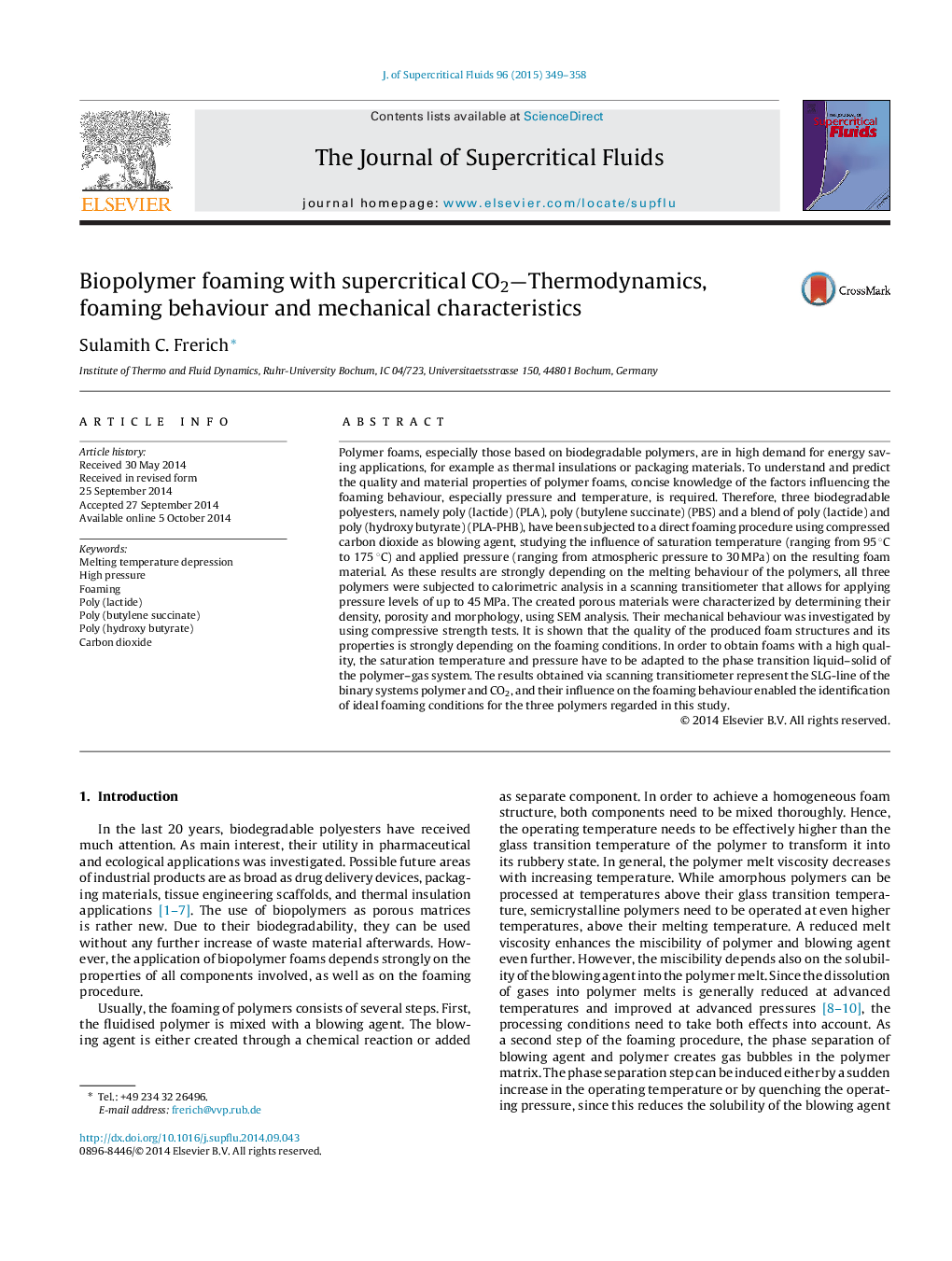| کد مقاله | کد نشریه | سال انتشار | مقاله انگلیسی | نسخه تمام متن |
|---|---|---|---|---|
| 230468 | 1427381 | 2015 | 10 صفحه PDF | دانلود رایگان |

• The scanning transitiometer enabled the determination of the melting temperature depression of three polyesters at pressures up to 45 MPa.
• Two polyesters did not show a melting temperature minimum upon pressure increase.
• The polyesters were foamed with carbon dioxide and showed tuneable properties.
• The influence of the melting temperature depression on the foaming parameters could be identified.
Polymer foams, especially those based on biodegradable polymers, are in high demand for energy saving applications, for example as thermal insulations or packaging materials. To understand and predict the quality and material properties of polymer foams, concise knowledge of the factors influencing the foaming behaviour, especially pressure and temperature, is required. Therefore, three biodegradable polyesters, namely poly (lactide) (PLA), poly (butylene succinate) (PBS) and a blend of poly (lactide) and poly (hydroxy butyrate) (PLA-PHB), have been subjected to a direct foaming procedure using compressed carbon dioxide as blowing agent, studying the influence of saturation temperature (ranging from 95 °C to 175 °C) and applied pressure (ranging from atmospheric pressure to 30 MPa) on the resulting foam material. As these results are strongly depending on the melting behaviour of the polymers, all three polymers were subjected to calorimetric analysis in a scanning transitiometer that allows for applying pressure levels of up to 45 MPa. The created porous materials were characterized by determining their density, porosity and morphology, using SEM analysis. Their mechanical behaviour was investigated by using compressive strength tests. It is shown that the quality of the produced foam structures and its properties is strongly depending on the foaming conditions. In order to obtain foams with a high quality, the saturation temperature and pressure have to be adapted to the phase transition liquid–solid of the polymer–gas system. The results obtained via scanning transitiometer represent the SLG-line of the binary systems polymer and CO2, and their influence on the foaming behaviour enabled the identification of ideal foaming conditions for the three polymers regarded in this study.
Figure optionsDownload as PowerPoint slide
Journal: The Journal of Supercritical Fluids - Volume 96, January 2015, Pages 349–358